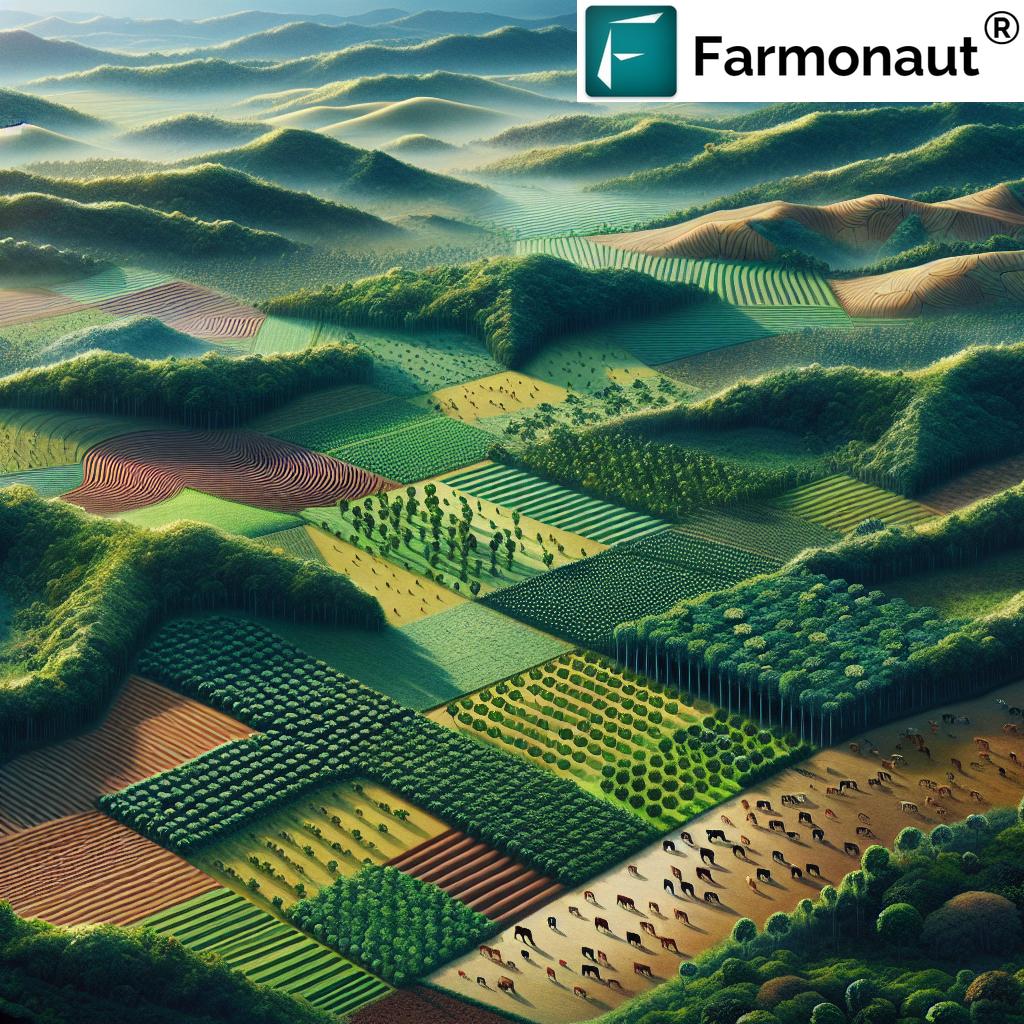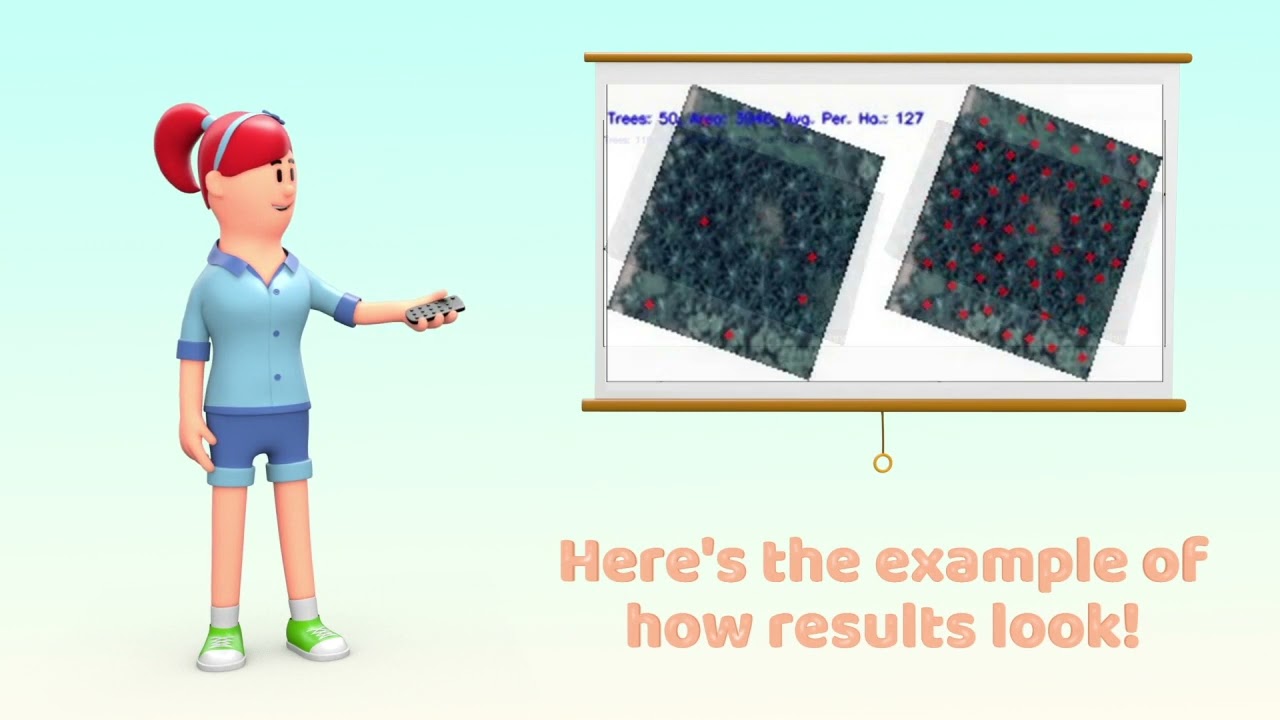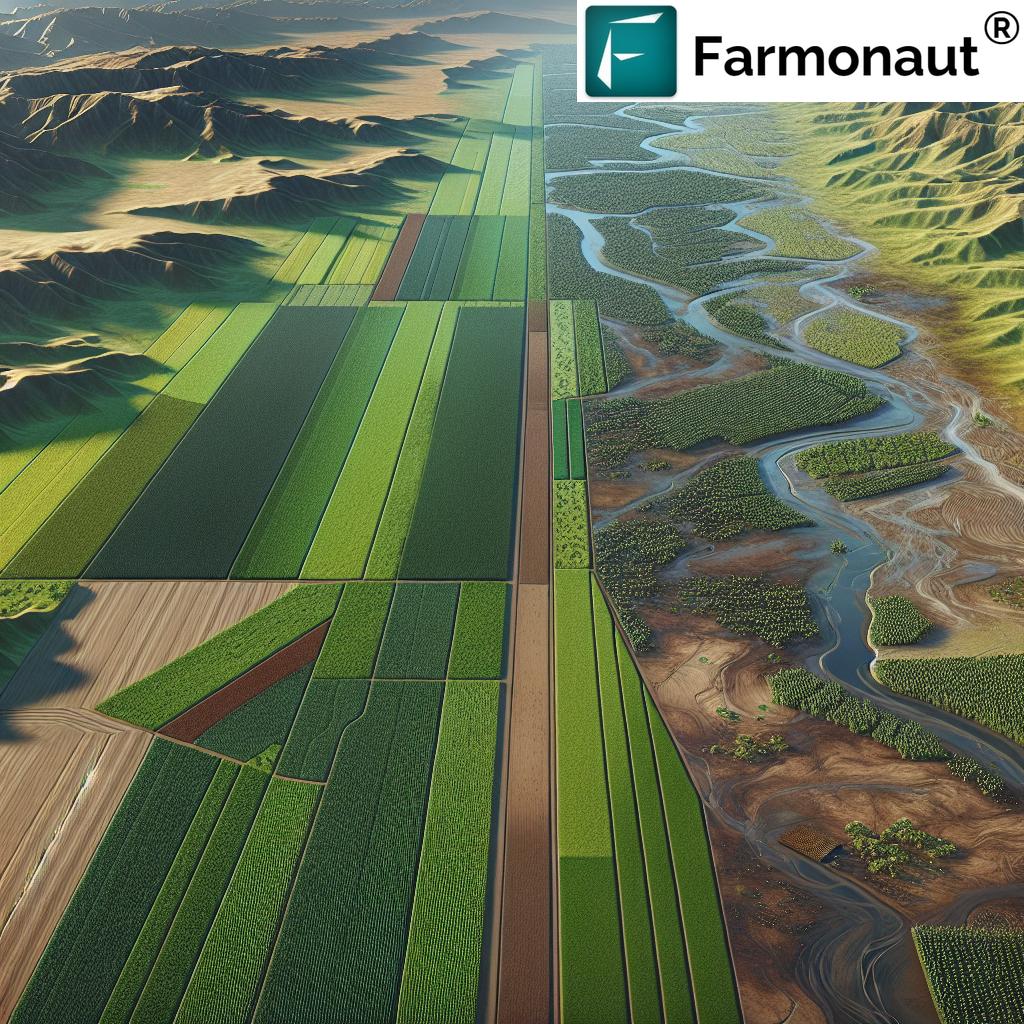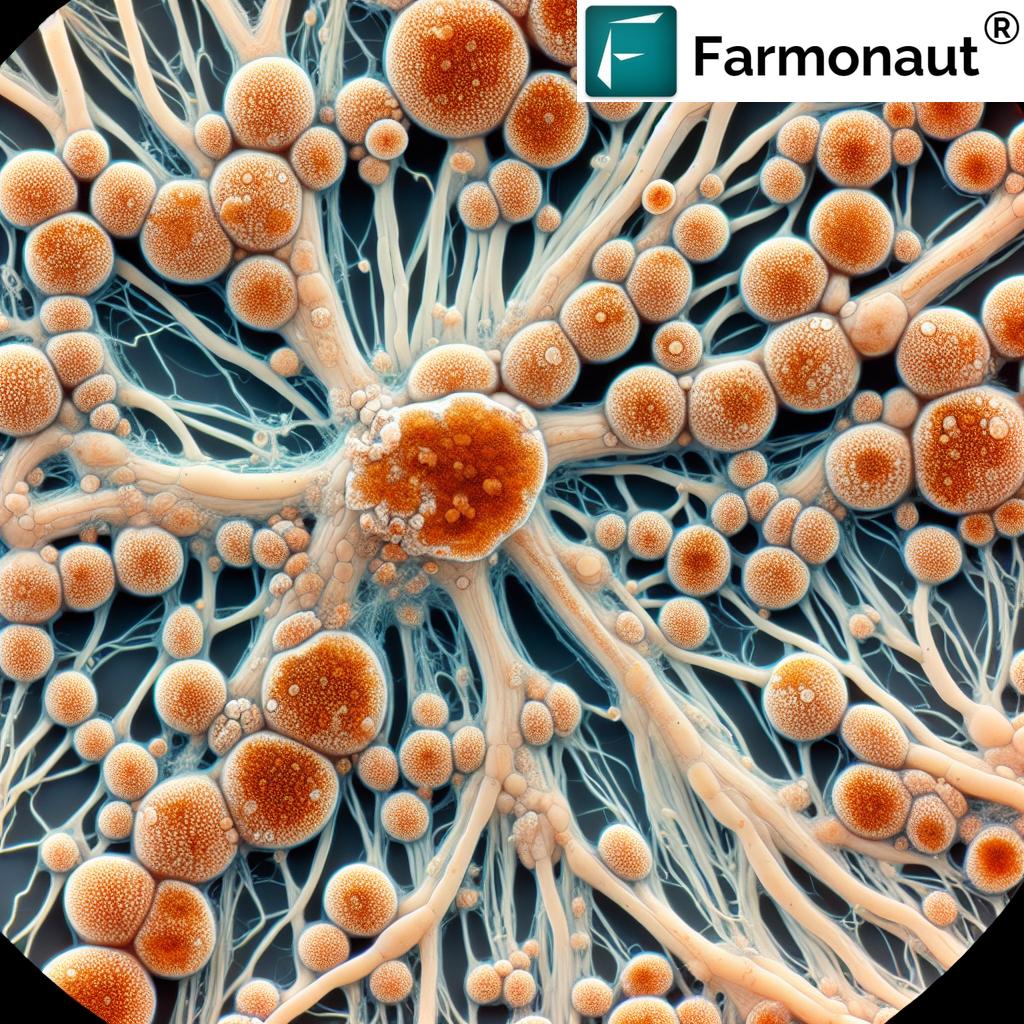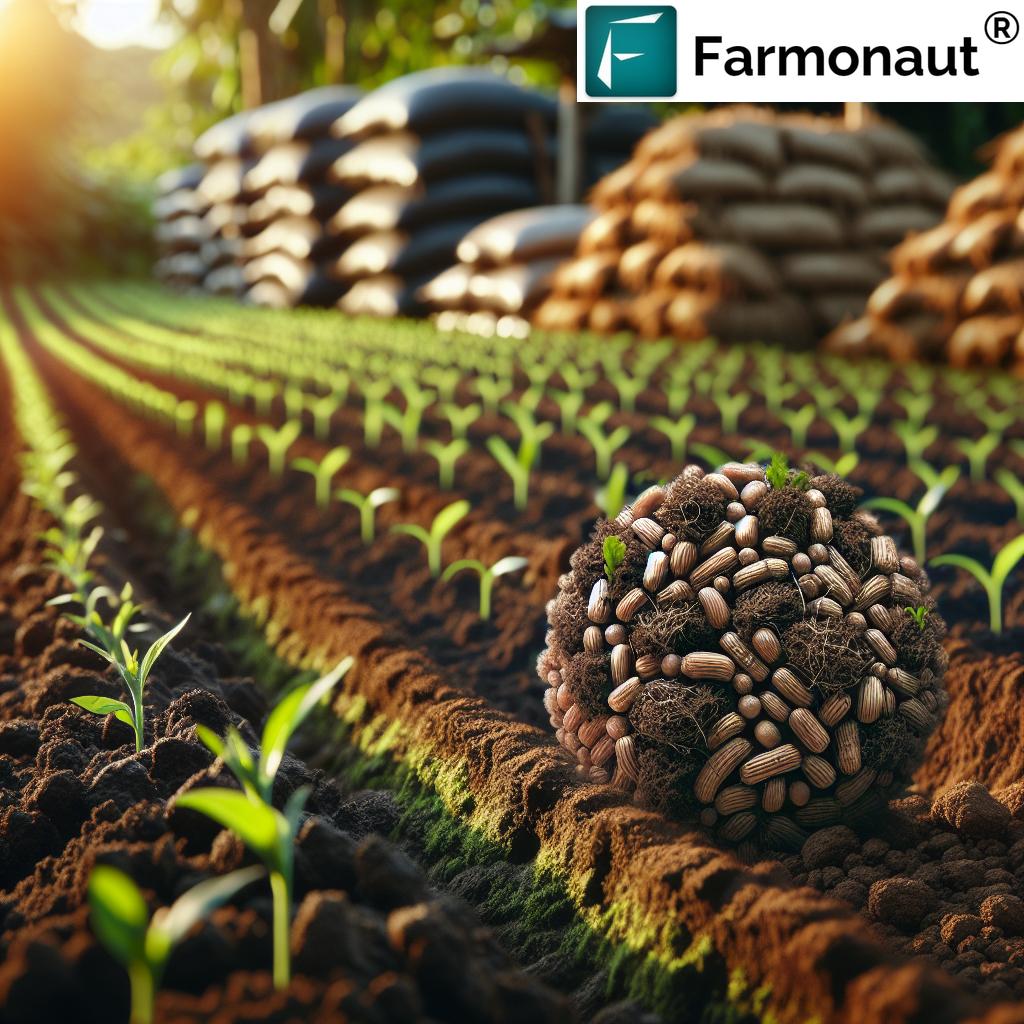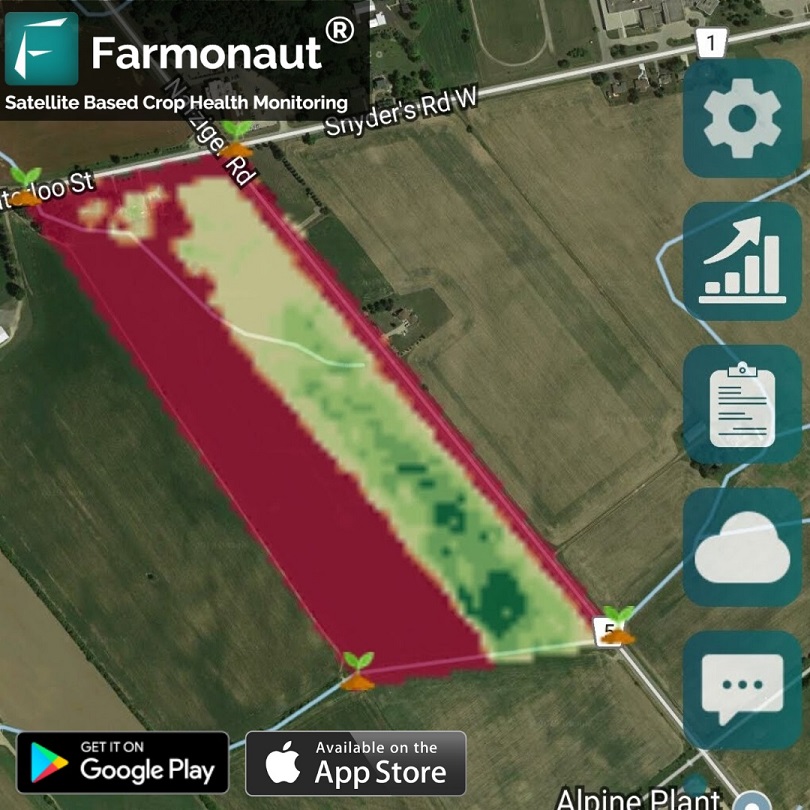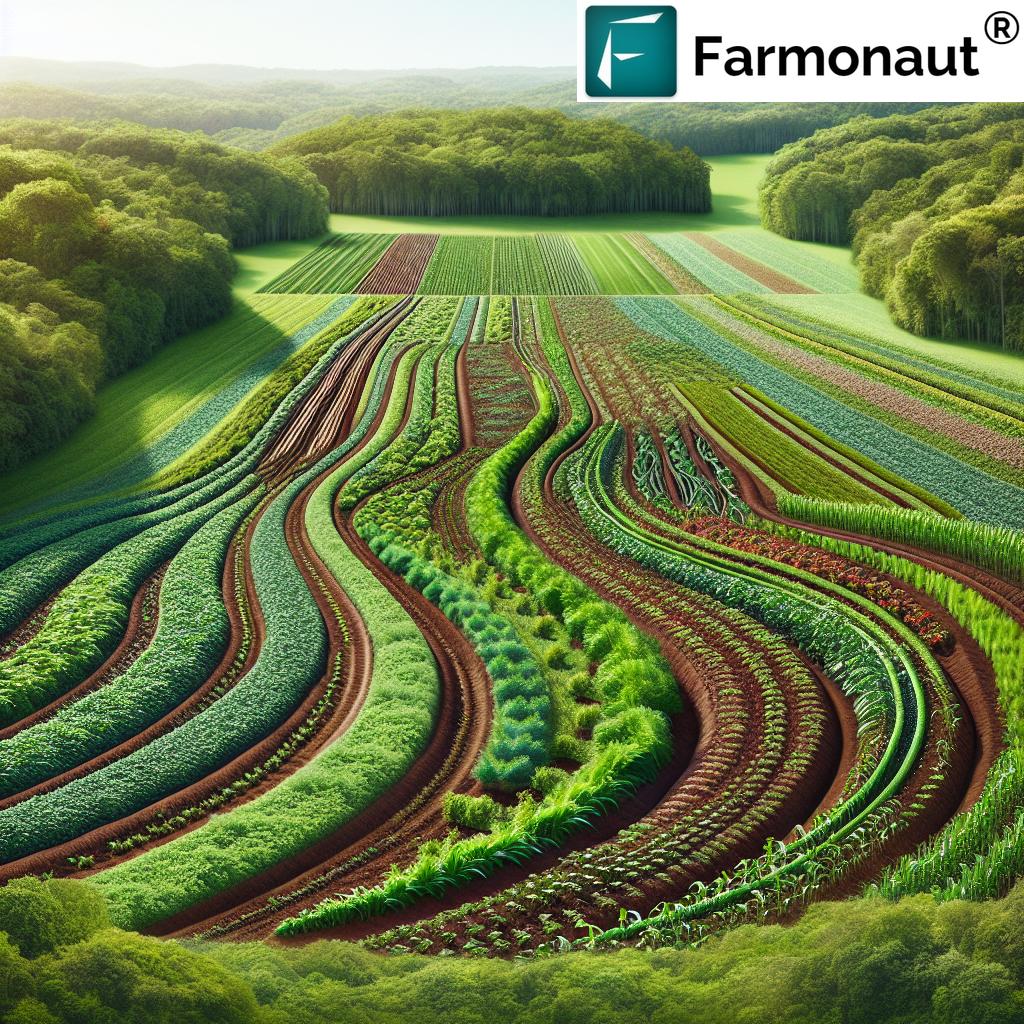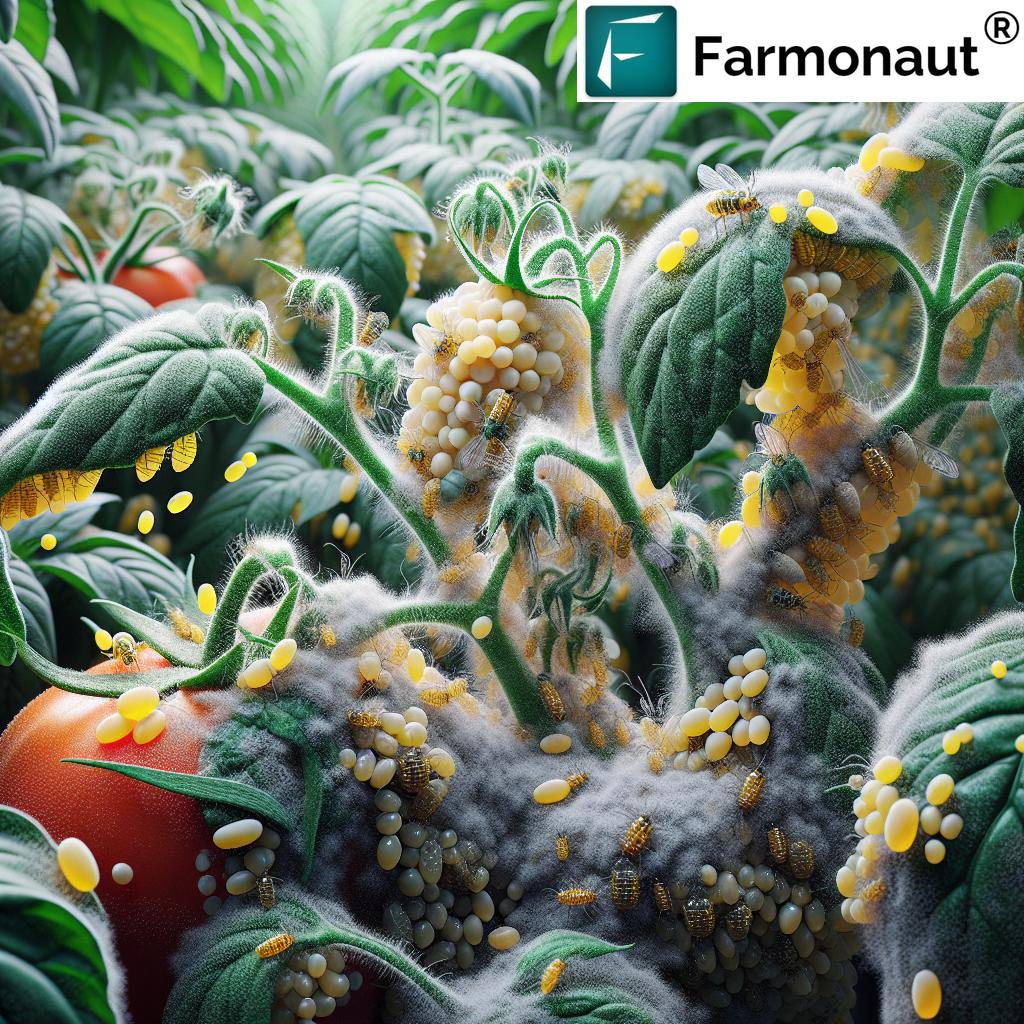Land Use Types: 7 Powerful Ways to Boost Sustainability
“Forests cover about 31% of Earth’s land area, supporting over 80% of terrestrial biodiversity.”
Introduction to Land Use Types & Sustainability
Land use refers to the various human activities, arrangements, and modifications made to natural environments on a specific parcel of land. These arrangements encompass the management and transformation of land to serve agricultural, forestry, conservation, urban, or industrial purposes. The types of land use we choose and how we manage them play a critical role in shaping our planet’s environmental health, biodiversity, and the sustainability of communities worldwide.
As environmental challenges escalate—ranging from climate change to land degradation and loss of biodiversity—the importance of sustainable land use practices has never been greater. By understanding and implementing the right types of land use in a sustainable manner, we support food security, preserve natural habitats, maintain ecological balance, and bolster resilience against future shocks. This comprehensive blog explores the vital categories of land use, their environmental impacts, and actionable pathways to maximize sustainability, productivity, and wellbeing for all.
The 7 Types of Land Use to Know for Sustainable Land Management
Let’s explore the primary types of land use—with a focus on agriculture, forestry, mixed areas, urban/industrial settings, wetlands/rangelands, conservation, and other emerging trends—and how each can promote sustainability when managed correctly.
1. Agricultural Land Use: Categories and Sustainable Practices
Agricultural land is primarily dedicated to the cultivation of crops and rearing of livestock. This category is subdivided based on primary activities and resources utilized. Understanding these types of agricultural land is crucial for optimal agricultural land management and environmental stewardship.
Types of Agricultural Land
- Arable Land: Suitable for plowing and supports the annual growth of crops like cereals, legumes, and vegetables. Characterized by high soil fertility and ability to be tilled regularly. Source: Arable Land
- Permanent Crops: Land committed to perennial plants that don’t require annual replanting. Examples:orchards, vineyards, plantations (oil palm, rubber trees). These permanent crop cultivation areas help in maintaining soil health and ecosystem stability. Source: Agricultural Land
- Permanent Pastures: Covered with natural or artificial grassland, these lands support grazing of livestock and are neither plowed nor reseeded annually, ensuring a continuous source of forage for animals.
Key soil conservation techniques in agriculture include crop rotation, reduced tillage, cover cropping, and integrated nutrient management. These methods help enhance soil structure, maintain fertility, and reduce erosion. Sustainable agricultural land management also includes efficient irrigation for better water resource management in agriculture.
Benefits of Sustainable Agricultural Practices:
- Increases productivity and farm income
- Preserves soil health
- Helps in maintaining biodiversity across agricultural landscapes
- Reduces environmental impacts (erosion, water depletion)
- Allows sustainable use and regeneration of land resources
Farmonaut’s crop plantation and forest advisory services empower farmers, plantation owners, and agribusinesses to manage lands with precision. Our platform offers real-time monitoring of crop health, soil moisture, and weather—maximizing productivity and sustainability for both annual and permanent crops.
2. Forestry Land Use: Trees, Biodiversity, and Sustainable Management
Forestry involves the management, utilization, and conservation of forests for products and ecosystem services. This land use includes several sub-types, each with specific environmental impacts and sustainability outcomes.
Types of Forestry Land Use
- Natural Forests: Developed naturally without significant human intervention. Rich in biodiversity, these forests store carbon, regulate water, and provide habitat for wildlife.
- Tree Plantations (Forest Plantations): Areas intensively managed and planted (usually monocultures) for commercial production of wood, pulp, and other products. Common species include eucalyptus and pine. Source: Tree Plantation
- Agroforestry: Integrated land use system combining trees with crops and/or livestock (see “agroforestry systems and benefits” section below).
Sustainable forestry and biodiversity conservation depend on maintaining a balance between resource extraction and protecting natural habitats. Selective logging, reforestation, and mixed-species plantations can help preserve biodiversity and ecological integrity. Forest management must also address soil conservation, carbon sequestration, and safeguarding water sources.
In recent years, satellite technology has enabled more precise monitoring and management of forests and plantations, ensuring better conservation and productivity.
Farmonaut’s Carbon Footprinting tool assists plantation managers and forestry operations in quantifying real-time emissions, monitoring tree growth, and supporting compliance with environmental standards. By providing actionable data on forest carbon, we help boost the sustainability and economic value of forestry areas.
Agroforestry Systems and Benefits
- Alley Cropping: Planting rows of trees alongside annual crops—enhances biodiversity, supports soil health, and diversifies farm incomes.
- Silvopasture: Combines forest trees with livestock grazing—trees offer shelter and additional forage, while animals contribute to nutrient cycling and underbrush control.
- Forest Farming: Growing shade-tolerant crops within managed forests—adds income while supporting woodland conservation.
“Sustainable agriculture can increase crop yields by up to 79% while reducing environmental impact.”
Farmonaut’s blockchain-based traceability systems empower forestry and agroforestry stakeholders to ensure transparent, secure tracking of timber and agricultural products—enhancing supply chain trust and reducing illegal logging.
3. Mixed Land Use: Multi-Functional Landscapes for Sustainability
Mixed land use integrates two or more types of land use—such as agriculture and forestry—within the same area or landscape. These systems optimize land productivity, promote biodiversity, and reduce pressure on single-use landscapes.
- Agroforestry Systems: Integrate crops, trees, and sometimes livestock to produce food, fiber, fuel, and timber simultaneously. Benefits include:
- Resilience against climate variability and market risks
- Improved soil health and water efficiency
- Enhanced biodiversity conservation
- Greater carbon sequestration and ecosystem health
- Silvopasture: Integration of forestry and livestock management within a single system, balancing animal welfare, tree growth, and landscape preservation.
- Urban & peri-urban farming: Mixing agriculture, forestry, and residential or commercial uses in city fringes or suburban areas to maximize resource use and support food security.
Successful mixed-use arrangements require thoughtful planning for ecosystem services, productivity, and social acceptability.
4. Urban and Industrial Land Use: Pressures & Opportunities for Sustainability
Rapid urban development and industrialization reshape land use patterns globally, impacting agriculture, forestry, and natural habitats. While not directly agricultural, urban and industrial uses are significant influences on regional sustainability.
- Urban areas: Land converted for residential, commercial, and infrastructural development, often encroaching on former agricultural and forested lands.
- Industrial areas: Zones designated for manufacturing, processing, and logistics activities. These can bring economic benefits but also increase environmental impacts (pollution, habitat loss).
Sustainable urban and industrial planning involves:
- Preserving green spaces
- Integrating urban agriculture and forestry
- Managing waste and industrial runoff
- Improving connectivity between urban and rural areas
Strategic land use planning ensures balanced development while minimizing resource depletion and maintaining ecological health.
For efficient management of operations in large farming, plantation, and even urban-agro projects, Farmonaut’s Fleet Management platform optimizes vehicle and equipment use, cutting operational costs and enhancing safety.
5. Wetlands & Rangeland Use: Preserving Biodiversity and Ecosystem Services
Although not always categorized alongside major types of land use, wetlands and rangelands are critical landscapes for biodiversity, water regulation, and climate resilience.
- Wetlands: Naturally or artificially covered with water, they support diverse ecosystems and act as filters for pollutants, buffers against floods, and carbon sinks.
- Rangelands: Often grassland or open shrub areas primarily used for grazing livestock. Sustainably managed rangelands maintain soil fertility, prevent erosion, and sustain wildlife habitat.
Conserving and restoring wetlands and rangelands is essential for maintaining biodiversity and supporting sustainable agricultural systems in adjacent lands.
6. Conservation and Protected Areas: Safeguarding Habitats & Biodiversity
Conservation areas are special regions designated for the primary purpose of preserving biodiversity and protecting natural ecosystems.
- Protected areas: Includes national parks, wildlife reserves, and conservation easements where human activity is minimal to preserve ecosystem health and allow species recovery.
- Buffer zones: Transitional areas around strict reserves, allowing for sustainable resource use and encouraging coexistence between wildlife and communities.
Biodiversity conservation relies on careful land use planning, enforcement, and community engagement. These areas provide irreplaceable ecosystem services and genetic resources.
7. Other Land Uses & Emerging Trends: Towards a More Sustainable Future
Land use is continuously evolving with new technologies, management systems, and policy frameworks. Strategic innovation, such as integrated landscape approaches, carbon farming, blockchain traceability, and nature-based solutions, is boosting the sustainability of land use worldwide. Data-driven decision making, as offered by Farmonaut’s platform, enhances land management at every level.
Farmonaut’s Large Scale Farm Management solutions enable agribusinesses and estate managers to monitor and manage extensive, diverse land holdings with real-time data, improving productivity and environmental compliance across all land use types.
Impact of Land Use Change on Environment
Every alteration in land use type—from converting forests to cropland, expanding urban areas, or introducing plantations—impacts the environment. Understanding these changes is central to effective land management and sustainability.
Major Environmental Impacts:
- Deforestation: Large-scale clearance of forests (e.g., in the Amazon, 80% deforested land goes to cattle ranching) leads to severe loss of biodiversity, habitat destruction, increased greenhouse gas emissions, and disrupted ecological balance. More: Deforestation
- Soil Degradation: Intensive agricultural practices without sustainable management can erode topsoil, deplete nutrients, and reduce future productivity.
- Water Resource Depletion: Over-extraction for irrigation or contamination via agrochemicals stresses ecosystems and local communities.
- Loss of Ecosystem Services: These range from reduced carbon sequestration and impaired flood regulation to loss of genetic resources and recreational values.
Transitioning toward sustainable land use practices reduces these impacts, helping societies balance development with long-term ecological and economic health.
Reliable land monitoring is also critical for agricultural finance. Farmonaut’s satellite-based crop loan and insurance verification helps banks and insurers assess land use, crop health, and risk, accelerating loan approvals and minimizing fraud for producers.
Integrate advanced land use monitoring with your applications via Farmonaut’s API and review integration steps in the API Developer Documentation. Access real-time satellite, weather, and land use data for custom solutions.
Sustainable Land Use Practices & Agricultural Land Management
To ensure long-term sustainability, we must adopt integrated land use planning, evidence-based soil conservation techniques, and agroecological approaches.
- Agroecology: Applies ecological knowledge—e.g., crop diversification, beneficial insect habitats, cover crops—to make farming more resilient and eco-friendly.
- Conservation Agriculture: Combines minimal soil disturbance, permanent soil cover, and crop rotation for optimal soil health and productivity.
- Integrated Land Use Planning: Considers agriculture, forestry, conservation, and urban development together for balanced, sustainable use of resources.
- Water Resource Management in Agriculture: Efficient irrigation, rainwater harvesting, and careful nutrient management reduce water depletion and pollution.
- Restoration & Rehabilitation: Returning degraded lands (e.g., abandoned, salinized, or mined) to productivity through tree planting, managed grazing, and soil enrichment.
- Biodiversity-friendly Practices: Hedgerows, buffer strips, agroforestry, and set-asides for wild species within farms and plantations.
The key to sustainable land use lies in fostering cooperation among farmers, forest managers, urban planners, policy makers, and communities.
How Farmonaut Empowers Sustainable Land Use
We at Farmonaut are committed to making precision agriculture and sustainable land management affordable, accessible, and impactful for farmers, agribusinesses, and institutions worldwide. Here’s how our technologies support all major types of land use:
- Satellite-based Crop & Forest Monitoring: Real-time insights on vegetation health, soil moisture, crop performance, and environmental stressors
- Jeevn AI Advisory System: Personalized, AI-powered crop management advice for improved productivity and risk mitigation
- Blockchain-based Traceability: Transparent, tamper-proof records for agricultural, forestry, or plantation products
- Fleet & Resource Management: Optimized use of equipment and labor
- Carbon Footprinting: Support for sustainable agriculture and forestry compliance with climate goals
- Flexible Access via web, Android, iOS, and API for all scales of operation
By leveraging cutting-edge satellite, AI, and data analytics, we help users preserve biodiversity, conserve soil and water resources, optimize input use, and reduce carbon emissions on lands of any size or primary function.
Comparison of Land Use Types and Their Sustainability Impacts
| Land Use Type | Key Sustainable Practices | Estimated Environmental Impact | Biodiversity Conservation Potential | Example Applications |
|---|---|---|---|---|
| Agriculture | Agroecology, Conservation agriculture, Nutrient & water management | Medium (depends on intensity & practices) | Medium (with habitat features) | Grain farms, oil palm plantations, mixed crop-livestock systems |
| Forestry | Selective logging, Reforestation, Carbon monitoring, Mixed species plantations | Low–Medium | High (in natural & well-managed plantations) | Managed forest, tree plantations, community forests |
| Urban | Green infrastructure, Urban forestry, Rooftop gardens | High | Low | Residential, industrial, and peri-urban developments |
| Wetlands | Restoration, Pollution control, Ecological monitoring | Low (when preserved) | Very High (unique habitats & species) | Marshes, mangroves, river deltas |
| Rangeland | Rotational grazing, Soil conservation, Water hole protection | Medium | Medium | Savannas, steppes, natural grasslands |
| Conservation | Habitat preservation, Buffer zones, Invasive species control | Very Low | Very High | Protected areas, biosphere reserves, wildlife sanctuaries |
| Mixed-use | Agroforestry, Silvopasture, Integrated planning | Low–Medium | High | Agroforestry farms, urban green corridors, silvopasture landscapes |
Frequently Asked Questions (FAQ) — Land Use, Sustainability & Agriculture
-
What are the main types of land use?
The main categories are: agriculture (arable, permanent crops, pastures), forestry (natural forests, plantations, agroforestry), mixed-use, urban/industrial, wetlands, rangelands, and conservation/protected areas.
-
How does land use affect the environment?
Each type of land use impacts the environment by influencing soil health, water resources, biodiversity, and greenhouse gas emissions. Poorly managed changes can cause deforestation, soil degradation, pollution, and loss of ecosystem services.
-
What is sustainable land use?
Sustainable land use involves managing land to meet current needs (food, fiber, housing) while preserving soil, water, and biodiversity for future generations. It uses eco-friendly practices, restores degraded lands, and balances conservation with production.
-
What is the importance of agroforestry?
Agroforestry integrates trees with crops or livestock, increasing farm productivity, reducing soil erosion, conserving water, and supporting biodiversity. It’s a key mixed-use practice for sustainability.
-
How can technology improve sustainable land use?
Technology (like Farmonaut’s platform) allows real-time monitoring, smart resource management, yield optimization, and transparent traceability—empowering stakeholders to make data-driven, sustainable decisions at any scale.
-
Why are wetlands important in land use planning?
Wetlands provide vital ecosystem services—water purification, flood control, carbon storage, and supporting unique species. Preserving and restoring them strengthens environmental resilience.
-
How do I get started with digital land monitoring?
You can try out comprehensive tools for satellite monitoring of farms, fields, and plantations by joining Farmonaut’s web or mobile platform.
Conclusion: Land Use for a Sustainable World
Every land use type—from agriculture and forestry to rangelands, wetlands, and urban systems—is both a challenge and an opportunity for sustainability. By selecting appropriate land use categories, maintaining biodiversity, supporting soil and water health, and using advanced management systems, societies can pursue sustainable development that safeguards both communities and the planet’s natural heritage.
At Farmonaut, we believe that empowering decision makers with innovative technology, data insights, and actionable tools will shape the future of sustainable land use worldwide. Together, let’s build a more resilient, abundant, and harmonious relationship with our lands!


